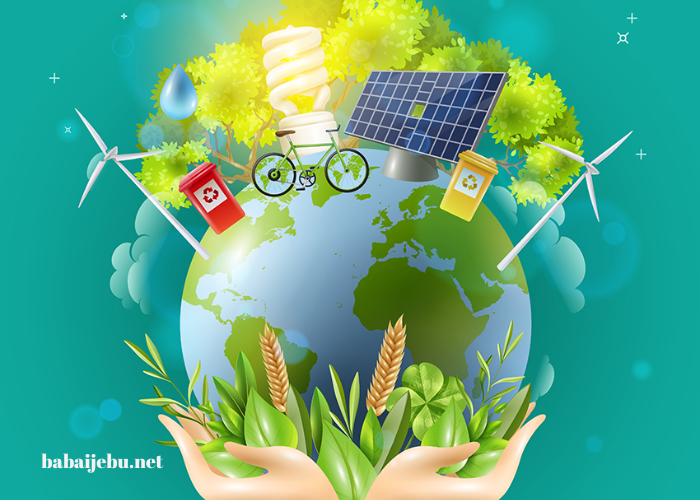In the face of escalating climate change and environmental degradation, the push for sustainable technology has never been more critical. Innovations in this sector are transforming the way industries operate, ensuring a balance between technological advancement and ecological stewardship. “Sustainable Tech: Innovations for a Greener Planet” explores the burgeoning field of sustainable technology, highlighting groundbreaking innovations that promise to reshape our world for the better.
The Imperative of Sustainable Technology
Sustainable technology encompasses a wide range of solutions designed to minimize environmental impact, enhance energy efficiency, and promote resource conservation. As the global population continues to rise and industrial activities expand, the urgency to adopt and develop technologies that support environmental sustainability becomes increasingly apparent. The key drivers of this transformation include the need to reduce greenhouse gas emissions, manage waste effectively, and shift towards renewable energy sources.
Renewable Energy Innovations
At the forefront of sustainable technology is the advancement of renewable energy sources. Solar and wind power have long been recognized as crucial elements in the shift away from fossil fuels. However, recent innovations are making these technologies more efficient and accessible than ever before.
- Perovskite Solar Cells: One of the most exciting developments in solar technology is the emergence of perovskite solar cells. These cells, made from a mineral-like structure known as perovskite, offer high efficiency and low production costs compared to traditional silicon-based cells. Their flexibility and light weight make them suitable for a variety of applications, from portable electronics to building-integrated photovoltaics.
- Offshore Wind Farms: Offshore wind technology is another area of rapid innovation. Floating wind turbines, which can be deployed in deeper waters than traditional fixed-bottom turbines, open up vast new areas for wind energy capture. Advances in turbine design and mooring systems are driving down costs and increasing energy output, making offshore wind a viable and promising energy source.
Energy Storage Solutions
The effectiveness of renewable energy is often limited by the intermittent nature of sources like solar and wind. Energy storage solutions are therefore critical to achieving a reliable and consistent energy supply. Recent innovations in this area are pushing the boundaries of what is possible.
- Solid-State Batteries: Traditional lithium-ion batteries, while effective, face limitations in terms of safety, energy density, and lifespan. Solid-state batteries, which use a solid electrolyte instead of a liquid one, promise to address these issues. They offer higher energy densities, faster charging times, and greater safety, making them ideal for applications ranging from electric vehicles to grid energy storage.
- Advanced Pumped Hydro Storage: Pumped hydro storage has been a reliable method for grid energy storage for decades. Recent advancements are enhancing its efficiency and scalability. Innovative designs, such as closed-loop systems that do not rely on natural water sources, are minimizing environmental impacts while increasing energy storage capacity.
Sustainable Agriculture Technologies
Agriculture is a major sector where sustainable technology can have a profound impact. Innovations in this field are helping to increase crop yields, reduce water usage, and minimize the use of harmful chemicals.
- Precision Agriculture: Precision agriculture employs technology such as GPS, sensors, and data analytics to optimize farming practices. This approach allows farmers to apply water, fertilizers, and pesticides more efficiently, reducing waste and environmental impact. For example, soil moisture sensors can help determine the exact amount of water needed, preventing over-irrigation and conserving water resources.
- Vertical Farming: Vertical farming is an innovative approach to growing crops in stacked layers, often within controlled environments such as greenhouses or indoor farms. This method reduces the need for arable land and allows for year-round production. Advances in LED lighting and hydroponic systems are making vertical farming more energy-efficient and scalable.
Sustainable Transportation
Transportation is a significant contributor to greenhouse gas emissions, and innovations in this sector are crucial for achieving sustainability goals. Electric and hydrogen-powered vehicles are at the forefront of this transformation.
- Electric Vehicles (EVs): The EV market is experiencing rapid growth, driven by advancements in battery technology, charging infrastructure, and vehicle design. Companies are developing long-range batteries, fast-charging solutions, and more affordable models to make EVs accessible to a broader audience. The integration of renewable energy sources into charging networks further enhances the sustainability of electric transportation.
- Hydrogen Fuel Cells: Hydrogen fuel cells are another promising technology for reducing transportation emissions. Unlike battery-electric vehicles, hydrogen fuel cell vehicles generate electricity on-board by combining hydrogen with oxygen. This process produces only water as a byproduct, making it a zero-emission technology. Innovations in hydrogen production, storage, and distribution are addressing current challenges and expanding the potential for fuel cell adoption.
Waste Management and Circular Economy
Effective waste management is essential for minimizing environmental impact and promoting sustainability. The circular economy model, which emphasizes recycling, reuse, and reduction of waste, is gaining traction.
- Advanced Recycling Technologies: Innovations in recycling technology are improving the efficiency and effectiveness of waste processing. Chemical recycling methods, which break down plastics into their basic components for reuse, are particularly promising. These methods can handle a wider range of plastic types and improve the quality of recycled materials.
- Bio-Based Materials: The development of bio-based materials, which are derived from renewable resources, offers an alternative to traditional plastics and other non-sustainable materials. Examples include biodegradable plastics made from plant materials and bio-composites used in construction and manufacturing. These materials reduce reliance on fossil fuels and minimize environmental impact.
The Role of Policy and Collaboration
While technological innovations are crucial, achieving sustainability goals also requires supportive policies and collaborative efforts. Governments, businesses, and communities must work together to create an environment conducive to the development and adoption of sustainable technologies.
- Government Incentives: Policies that incentivize the adoption of sustainable technologies, such as tax credits, grants, and subsidies, can accelerate progress. These incentives help reduce the financial burden on businesses and individuals, making it easier to invest in green technologies.
- Industry Collaboration: Collaboration between industries and sectors can drive innovation and efficiency. Shared research, joint ventures, and industry standards can help address common challenges and promote the widespread adoption of sustainable practices.
Conclusion
The field of sustainable technology is rapidly evolving, offering innovative solutions to some of the world’s most pressing environmental challenges. From renewable energy and advanced storage solutions to sustainable agriculture and transportation, these innovations are paving the way for a greener planet. However, the transition to a sustainable future requires more than just technological advancements—it necessitates a collective commitment to environmental stewardship and collaborative action across all sectors of society. By embracing these innovations and working together, we can forge a path towards a more sustainable and resilient world.




